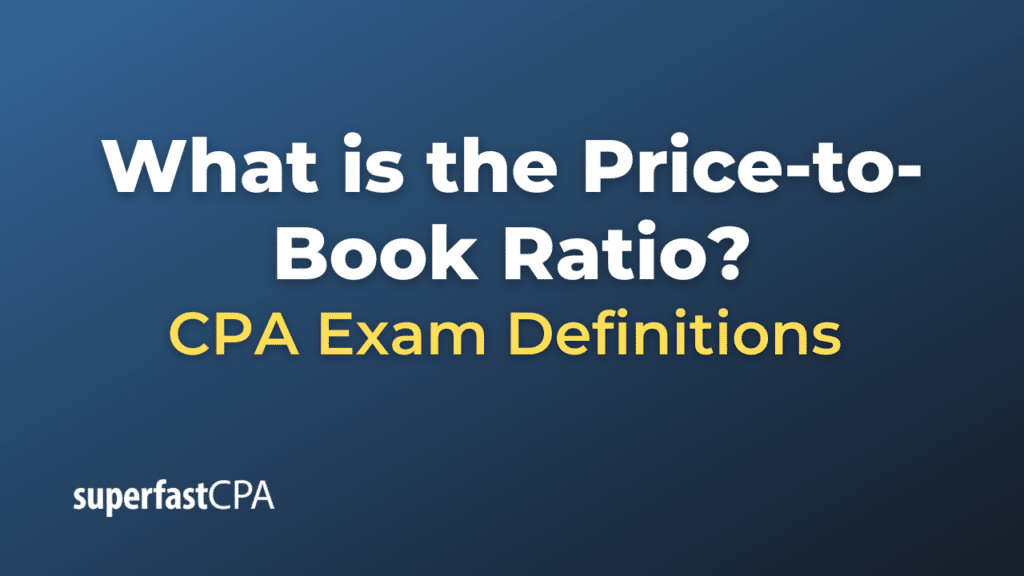Price-to-Book Ratio
The Price-to-Book (P/B) ratio is a financial ratio used by investors to compare a company’s market value (its current share price) to its book value (its net asset value as reported on its balance sheet).
The formula for calculating the Price-to-Book ratio is as follows:
Price-to-Book Ratio = Market Price per Share / Book Value per Share
The market price per share is the current price at which the stock is trading in the market. The book value per share is calculated by dividing the company’s total book value (its assets minus its liabilities) by the number of outstanding shares.
The P/B ratio indicates how much equity investors are paying for each dollar of net assets. A high P/B ratio could mean that the stock is overvalued, while a low P/B ratio could indicate that the stock is undervalued. However, like all financial ratios, the P/B ratio should be used in conjunction with other metrics and not as a standalone measure of a company’s value.
It’s also important to note that the P/B ratio is more useful in comparing companies within the same industry, and less useful for comparing companies across different industries. This is because different industries have different financial structures and asset requirements. For example, a tech company might have a high P/B ratio compared to a manufacturing company, but that doesn’t necessarily mean it’s overvalued; it could just reflect differences in the industry norms.
Example of the Price-to-Book Ratio
Let’s take an example to illustrate the Price-to-Book (P/B) ratio. Let’s say we are comparing two companies in the same industry: Company A and Company B.
Company A’s current market price per share is $50, and its book value per share is $25. Therefore, its P/B ratio would be:
P/B ratio = Market Price per Share / Book Value per Share
P/B ratio = $50 / $25 = 2
This means that investors are willing to pay $2 for every $1 of Company A’s net assets.
Now let’s look at Company B. Suppose its current market price per share is $30, and its book value per share is $20. Therefore, its P/B ratio would be:
P/B ratio = Market Price per Share / Book Value per Share
P/B ratio = $30 / $20 = 1.5
So, for Company B, investors are willing to pay $1.5 for every $1 of net assets.
In this comparison, Company A has a higher P/B ratio. If all other factors are similar, this could indicate that the market perceives Company A as having better growth prospects, or it could suggest that Company A is overvalued compared to Company B.
It’s essential to remember that the P/B ratio is just one tool among many. It can help provide a quick comparison between two companies, but investors should not base decisions solely on the P/B ratio. Other factors such as the companies’ growth rates, profitability, debt levels, and the overall state of the market should also be considered.













